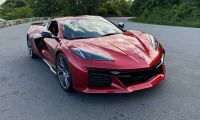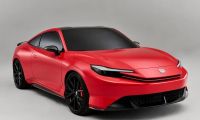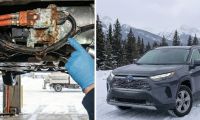30% Faster Over 5 Years
Tesla has revealed that they've unlocked a 30% faster charge time at its Superchargers using a combination of hardware, software, and customer education. There are six primary reasons for Tesla improving its charging times:
Transition to V3
Tesla Superchargers were upgraded in 2019 to V3, and this increased speeds to about 250 kW. At the time, on March 6th, 2019, Tesla had about 12,000 Superchargers world-wide. V3 is a completely new architecture for supercharging. The cabinet is a 1 MW power cabinet with a similar design to the utility scale products that Tesla offers.
A Model 3 long range operating at peak efficiency can recover up to 75 miles of charge in 5 minutes and charge at rates of up to 1,000 miles per hour. With other improvements, Tesla cut the amount of time customers spend charging by an average of 50% according to their fleet data.
Efficient Routing With Trip Planner
Trip Planner is a very useful tool when taking a road trip. It lets you enter a location and a destination and will tell you all your stops along the way, depending on which vehicle you are driving. The trip planner will maximize your charging efficiency and times.
For instance, I set a trip from where I live in Utah to Kalamazoo, MI, and I got these locations to charge at:
* Evanston, WY: 50 min. charge
* Rawlins, WY: 25 min. charge
* Laramie, WY: 55 min. charge
* Ogallala, NE: 55 min. charge
* Grand Island, NE: 50 min. charge
* Council Bluffs, IA: 45 min. charge
* Altoona, IA: 55 min. charge
* Davenport, IA: 75 min. charge
* Michigan City, IN: 25 min. charge
* Kalamazoo, MI
The duration of the trip ends up being about 30 hours and 15 minutes for a total of 1,557 miles. I have done this trip before, and it took me about 24 hours in a gas car. The extra 6 hours comes here for charging my Model 3 RWD, which is the slowest charging Tesla vehicle.
If I had a Model 3 long range or other high-end vehicle, the charging times are halved and the trip takes a few hours less. You can use the Tesla trip planner here.
Supercharger Density Increasing
Tesla V3 Superchargers saw an increase in peak power from 250 kW to 324 kW. This is close to a CCS charger that gets about 350 kW. Tesla increased the power that these chargers have compared to its older versions.
You may also be interested in:
- Tesla's To Be Made Just Like Toy Cars.
- How regenerative braking works in EVs.
- The staggering economics of the Tesla semi.
How Much Faster Will Superchargers Get?
Vehicle Efficiency
Tesla vehicles are getting more efficient. That means that they manage their heat and Energy usage better with improved hardware and software. Tesla vehicles have better battery management systems, which help improve charging and reduce wear on the battery.
Battery Pre-Heating
When you navigate to a Tesla Supercharger, the vehicle automatically begins pre-conditioning the battery for faster charging. This is done in order to make the charge happen as fast and safely as possible.
It makes sense to get your battery warm before arriving at the Supercharger. Once you arrive, your warm battery will charge much faster.
Customer Education
Tesla continues to educate customers about charging their EV. For example, a Model 3 RWD now has LFP batteries and those can be charged to 100% for daily driving.
However, a Model 3 long range does not use that battery chemistry and should be charge to 90% for daily use. Charging to 90% in a Model 3 long range is a lot faster than charging to 100%. That last 10% takes a while.
I could see Superchargers being another 30% faster in 2027, with similar improvements and other innovations that Tesla does, along with advancements in hardware and software.
What do you think of these charging improvements from Tesla? Will they continue to get faster and batter?
You can see more in this video from Armen at TorqueNews:
In Related News: Tesla Model Y Is Starting to Lead the World in Sales
Over the last 5 years, we've unlocked 30% faster charge times through a combination of hardware, software & customer education pic.twitter.com/FZFoS85pBN
— Tesla (@Tesla) March 14, 2023
Leave your comments below, share the article with friends and tweet it out to your followers.
Jeremy Johnson is a Tesla investor and supporter. He first invested in Tesla in 2017 after years of following Elon Musk and admiring his work ethic and intelligence. Since then, he's become a Tesla bull, covering anything about Tesla he can find, while also dabbling in other electric vehicle companies. Jeremy covers Tesla developments at Torque News. You can follow him on Twitter or LinkedIn to stay in touch and follow his Tesla news coverage on Torque News.











